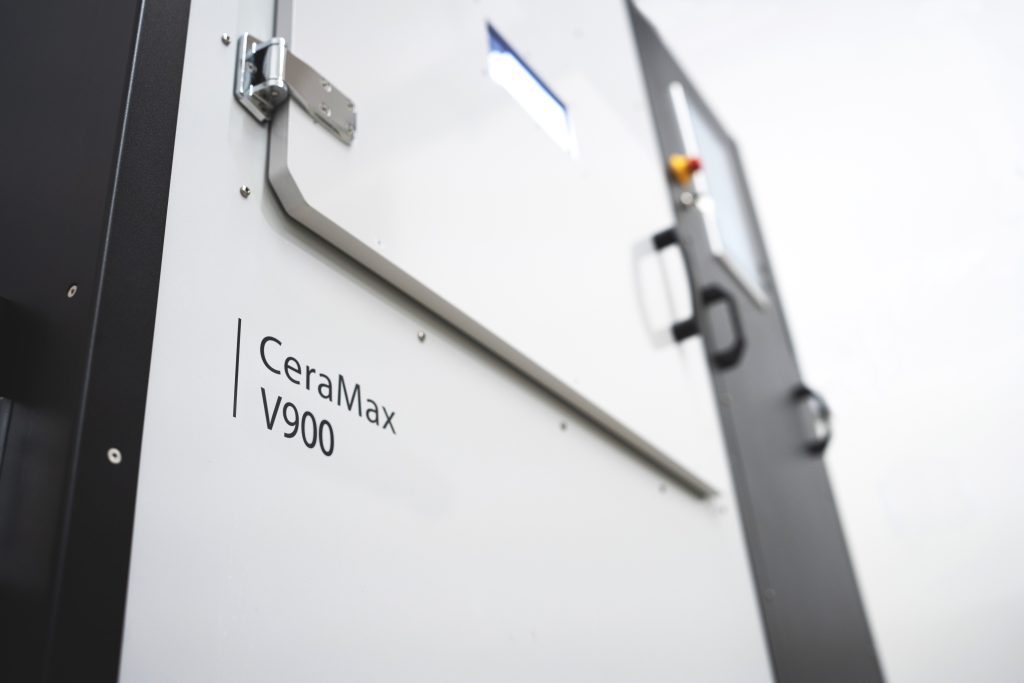Austrian ceramic 3D printing specialist Lithoz and the U.S. Department of Energy‘s (DOE) Oak Ridge National Laboratory (ORNL) have entered into a Cooperative R&D Agreement (CRADA) to explore the applications of Lithoz’s 3D printing technology.
This partnership showcases a collective push for progress in additive manufacturing, with a specific focus on non-oxide ceramics. As the collaborative project develops, it is poised to yield insights into the feasibility and scalability of utilizing 3D printing for ceramics with high-refractive indexes. This exploration holds the potential to expand the range of applications for this technology.
“This project will build on ORNL’s years of research in developing and testing high-temperature materials and ceramics,” said Corson Cramer, Extreme Environment Materials Processing Group staff scientist at ORNL. “By combining our expertise with Lithoz 3D printing capabilities, we have the potential to change the concept of high-temperature ceramics processing for heat exchange, aerospace and defense applications.”

Scaling high-temperature ceramics with 3D printing
Leveraging Laser-Induced Slipcasting (LIS) technology, the Lithoz CeraMax Vario V900 3D printer uses laser slurry drying for net shaping. This process employs computer-controlled light amplification by stimulated emission of radiation to desiccate controlled layers of solids suspended in liquid. The cooperative agreement’s primary objective is to advance this technology for shaping high-refractive index non-oxide ceramics, such as silicon carbide, intended for extreme temperature applications.
According to the company, LIS technology surpasses conventional molding by producing larger, intricately designed parts. With complex inner channels and 3D printable designs, it yields lighter, more efficient parts. The technology extends material possibilities by processing dark ceramics like silicon carbide and silicon nitride, a capability not achievable through alternative processes.
Industrializing the production of ultra-high-temperature ceramic parts is the primary objective of this project. The team plans to assess the technology’s capabilities by utilizing a common oxide-ceramic material. This involves the printing and debinding of key substances like silicon nitride and silicon carbide from the molded component, deemed essential for aerospace applications. The material will then undergo sintering, a heat-based process, to transform it into a solid form. Rigorous testing will follow to evaluate the performance and properties of the printed materials.
In July of this year, Lithoz and biomaterials specialist Himed formed a long-term partnership to develop 3D printing of medical-grade bioceramics, focusing on biocompatible calcium phosphates for medical implants. Following the launch of Lithoz’s LithaBone HA 480 material, Himed acquired a Lithoz CeraFab S65 Medical 3D printer. The collaboration is anticipated to establish an intercontinental pool of researchers for 3D printable bioceramics. Both companies envision advancing research on CaP materials to optimize 3D printed implant performance, marking a significant step in commercializing medical bioceramics.
Advanced ceramics manufacturing
3D printing company D3-AM introduced its Micro-Particle Jetting (MPJ) 3D printing technology at Formnext 2023, aiming to enhance additive manufacturing for high-performance ceramics. Overcoming limitations associated with traditional inkjet systems, the technology was showcased with alumina and sintered silicon carbide (SSiC) components. Stefan Waldner, Chief Product Officer of D3-AM, emphasized this technology has the potential to transform the manufacturing process of the future, from aerospace to the energy transition.
Ceramics 3D printing OEM and process provider 3DCeram Sinto is automating 3D printing for technical ceramics and green hydrogen production. CEO Richard Gaignon highlights 3D printing’s shift from prototyping to production, with automation crucial for efficiency. The company offers the C3600 ULTIMATE large-format 3D printer and the C1000 FLEXMATIC semi-automated version for industrial applications. Training, collaboration, and advanced sensors ensure the successful implementation of automated 3D printing lines. 3DCeram’s involvement in the European HyP3D Project further explores 3D printing’s potential in optimizing high-pressure hydrogen production.
Read all the 3D Printing Industry coverage from Formnext 2023.
What does the future of 3D printing for the next ten years hold?
What engineering challenges will need to be tackled in the additive manufacturing sector in the coming decade?
To stay up to date with the latest 3D printing news, don’t forget to subscribe to the 3D Printing Industry newsletter or follow us on Twitter, or like our page on Facebook.
While you’re here, why not subscribe to our Youtube channel? Featuring discussion, debriefs, video shorts, and webinar replays.
Are you looking for a job in the additive manufacturing industry? Visit 3D Printing Jobs for a selection of roles in the industry.
Featured image shows the CeraMax Vario V900 3D printer side angle. Photo via Lithoz.



